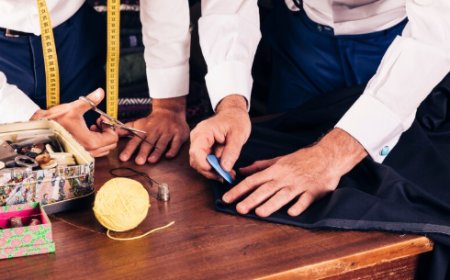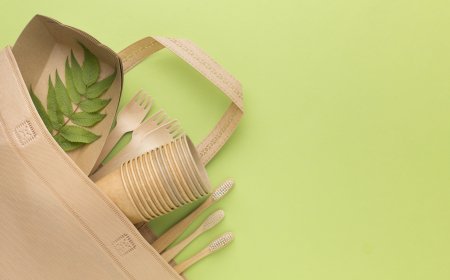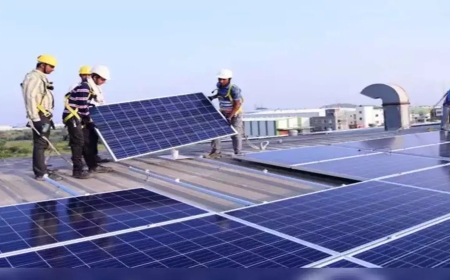Tree Pruning: The Secret to a Healthy, Beautiful Yard
Tree pruning isn’t just about keeping your trees looking good — it’s about protecting your home, improving your landscape, and promoting the long-term health of your green giants.

Tree pruning might sound like a fancy gardening term, but it’s really just the art (and science) of trimming trees the right way. Done correctly, tree pruning can boost a tree’s health, improve its shape, prevent safety hazards, and even enhance your entire landscape’s appearance.
Let’s dig into everything you need to know about tree pruning — why it matters, how it works, and when to do it.
What Is Tree Pruning?
Tree pruning is the selective removal of branches to improve the tree’s structure, direct growth, remove dead or diseased limbs, and create space or light. It’s not just about making a tree look nice — it’s essential for its long-term health and stability.
Benefits of Tree Pruning
1. Encourages Healthy Growth
Pruning clears out dead, damaged, or diseased branches, giving the tree more energy to grow stronger limbs and produce healthy leaves or fruit.
2. Improves Safety
Weak or overhanging branches can break off during storms, posing a danger to people, pets, cars, and homes. Pruning reduces that risk.
3. Boosts Curb Appeal
Want your property to look more polished? A well-pruned tree looks tidy, balanced, and beautiful — a major upgrade for any yard.
4. Increases Sunlight and Airflow
Thinning out branches helps sunlight reach your lawn or garden, while also allowing better airflow through the tree canopy. This can reduce disease and mold.
5. Prevents Property Damage
Pruning keeps branches from scraping against your house, growing into power lines, or blocking gutters and windows.
Common Types of Tree Pruning
1. Crown Thinning
This involves selectively removing branches throughout the crown to improve light penetration and air circulation.
2. Crown Raising
Removes lower branches to clear space for pedestrians, cars, or views — especially helpful for street trees or front yards.
3. Crown Reduction
Trims back the overall size of the tree without harming its natural shape. Useful for large trees that are too close to buildings or wires.
4. Deadwooding
Targets dead, dying, or broken limbs to prevent decay, disease, and falling hazards.
5. Structural Pruning
Usually done on young trees to encourage strong, balanced branch structure as they grow.
When Is the Best Time to Prune Trees?
-
Winter (dormant season): Ideal for most trees. Pruning in winter encourages robust spring growth and makes it easier to see the tree’s structure.
-
Spring: Good for flowering trees — but only after they’ve bloomed.
-
Summer: Useful for slowing unwanted growth or correcting minor issues.
-
Fall: Generally not recommended — trees are preparing for dormancy and may not heal properly.
Always consider the species of tree before pruning — some have unique timing needs.
Signs Your Tree Needs Pruning
-
Branches crossing or rubbing together
-
Dead, diseased, or broken limbs
-
Overgrown or unbalanced shape
-
Branches touching power lines or roofs
-
Tree looks too dense or dark in the center
-
Weak limb attachments or cracks in forks
DIY Tree Pruning vs. Hiring a Professional
You can do minor pruning on smaller trees, especially if the branches are within arm’s reach and tools are manageable.
But for anything higher, thicker, or potentially risky, it’s time to call a certified arborist. Professionals know how to make the right cuts without stressing the tree — and they’ll do it safely with proper gear.
Pruning Tools You Might Need
-
Hand pruners: For small twigs and branches
-
Loppers: For thicker limbs (up to 2 inches)
-
Pruning saw: For larger cuts
-
Pole pruner: For hard-to-reach areas
-
Chainsaw: Only for advanced users or professionals
Tip: Always sterilize tools before and after pruning to prevent disease spread.
Tree Pruning Mistakes to Avoid
-
Over-pruning: Removing too much at once can shock the tree. Never take off more than 25% of the canopy in one season.
-
Topping: Cutting off the top of a tree is a huge no-no — it weakens structure and invites disease.
-
Incorrect cuts: Random or jagged cuts can lead to rot and disease.
-
Ignoring safety: Pruning near power lines or from a ladder without help is dangerous.
Tree Pruning and Tree Health
Proper pruning promotes a strong, stable structure and prevents problems before they start. In fact, regular pruning can extend a tree’s lifespan, help it withstand storms, and reduce the need for future emergency work.
Tree Pruning for Fruit Trees
Want more fruit? Prune your fruit trees annually to:
-
Shape the tree for better sun exposure
-
Remove suckers and water sprouts
-
Encourage larger, healthier fruit
-
Prevent overcrowding and disease
Each fruit tree has its own timing and technique, so research or hire a specialist for best results.
How Often Should You Prune a Tree?
-
Young trees: Every 1–2 years to train proper growth
-
Mature trees: Every 3–5 years depending on species and health
-
Fruit trees: Annually
-
High-risk trees (storm-prone areas): Inspect yearly
Conclusion
Tree pruning isn’t just about keeping your trees looking good — it’s about protecting your home, improving your landscape, and promoting the long-term health of your green giants. Whether you’re shaping a young sapling or trimming a towering oak, regular and thoughtful pruning makes all the difference.
And when in doubt, always call in the pros. Your trees — and your property — will thank you.
FAQs About Tree Pruning
1. Is pruning the same as trimming?
Not exactly. Trimming usually refers to aesthetic shaping, while pruning is more focused on tree health and safety.
2. How much does professional tree pruning cost?
Costs vary by size, type, and location, but generally range from $200 to $800 per tree.
3. Can pruning kill a tree?
Yes, if done incorrectly. Over-pruning or making bad cuts can stress or even kill a tree.
4. Should I prune a tree right after planting?
Light shaping is okay, but major pruning should wait until the tree is established — usually after a year or two.
5. Can I prune my tree during summer?
Yes, especially for corrective work or to slow growth, but avoid heavy pruning during extreme heat.





































